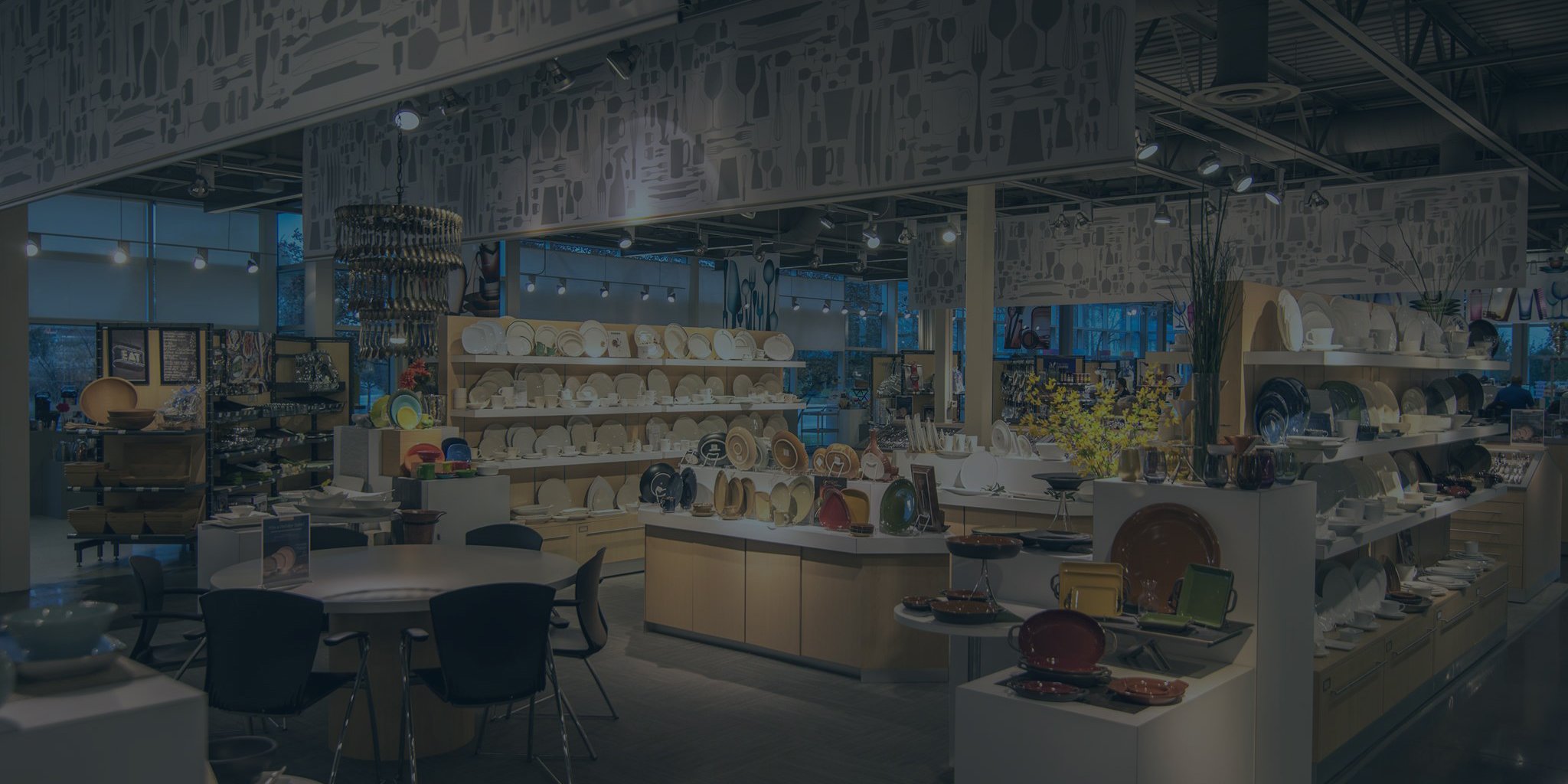Julie Pandl, Sales and Tabletop Specialist, continues her discussion on the role of tabletop design in a foodservice venture. In this episode, we cover industry trends: which ones are fads, and which ones are here to stay. Julie explains why restaurant owners and operators should avoid fly-by-night experiences and concentrate on those trends that have the greatest ROI potential.
To get started creating the perfect tabletop design, contact us today.
Excerpts
Let's start out by talking about why restaurant owners should avoid one-off tabletop trends. It seems like it's a good opportunity to keep things fresh. What's the downside to that strategy?
Julie: From a distributor standpoint and a specialist standpoint, we like to keep abreast of what's going on out in the industry. We work closely with our manufacturers – they're really the ones that are setting the trends, anticipating the trends. They travel all over the world. They develop their products based on what they're seeing out there. It's important to work with people who have their finger on the pulse of what's going on.
Tabletop is one of your more sizable investments. You don't want to willy-nilly decide, "Okay, well this is trendy now. Let's do this." Because then you're going to end up with tabletop that is not trendy three years from now and you just spent $30,000 on it. You want to make sure that you're doing the right thing for your establishment.
So while trends are great, people like to feel like they're walking in someplace that is relevant. You have to do what's right for your establishment. What you're doing is creating your essence. You can pay attention to trends all you want, but really what you want to do is set the ambiance for your restaurant, for your customers.
...
Are these trends coming in and out pretty quick? You've mentioned three years. Is that what you're seeing? Are you seeing some come and go even quicker than that?
Julie: In tabletop, when something new happens, it seems to take a while for it to catch on. We can see a lot of new things – new shapes, new colors, new embossing, new ideas – but sometimes they take a year or two just to filter into the industry.
Then it's a matter of stepping back and saying, "How deep did this filter and what is it really going to look like?" Anticipating which trends are going to stay and which trends aren't takes a little while to figure out. None of us have a crystal ball. We're all trying to figure out what's selling, what's not selling, what seems to be working, what doesn't. It's definitely an educated, anticipatory process.
...
If you're on the trend train, do you think that it could confuse your customers, and it's going to turn them off?
Julie: It's not only confusing for your customers, but it's going to be confusing for your staff too, if you're trying to go with what the new trend is, changing things like menu, presentation. It's a lot for people to remember. It takes a restaurant awhile to get its groove, especially a new opening. It's important to stick with what you're doing. "Play your game," as they say.
...
How does color come into play? How important is it?
Julie: This is one of the trends that I actually believe has some staying power. For a long time, chefs wanted white. White, white, white, white. Everything had to be on white because they wanted their food to stand out. A lot of people still use white. Bright white definitely has its place on the tabletop.
But, color has been working its way in for a long time. Whether it's a bright pop of color, or it's a more muted earth tone color, it's everywhere. And you know what? Food looks great on it.
Manufacturers are not necessarily doing a solid color. They're doing a lot of interesting things with speckled, and different types of glazes, unique printing processes. When you're looking at china, you're going to see a wide variety of interesting looks, interesting colors. The printing processes now end up creating what we call a reactive glaze. Each piece is unique, which is an interesting way to plate your food.
Branding and marketing involves color. Your logo has a color. It might have multiple colors. You have an opportunity to have a cohesive feel. You can work that color right into your tabletop. It means something when your customer sees your logo.
Let's say your logo is on a glass and then your entree comes, and the colors match. And they look right together. It doesn't have to be super matchy-matchy. It could be a noodle bowl that has a funky reactive glaze, but the colors are similar. That says to the customer: We paid attention. We tied all this in together. Food looks good on color.
Another one of the trends that is only going to get stronger and stronger is lots of ethnic foods, ethnic restaurants. Ethnic foods tend to be very colorful. There's a lot of different ethnicities that have interesting colors, interesting spices, interesting fruits and vegetables. It can really pop on a plate with some fun color.
I'm not saying that your entire tabletop has to be full of color. A lot of customers will go with white, which is great for their major dishes. But they'll have specialty pieces for a fish special, or special appetizers. You don't have to necessarily have every single piece on color. In fact, there's a lot of restaurateurs who I would probably advise against that. It's an interesting way to keep things fun, keep things interesting.You can also upcharge. If you give some really nice presentation, you can charge a little more for that. The ROI on something like that is not terribly long. If you’re a 150-seat restaurant and you're buying a couple dozen really nice platters to do your specialty appetizer on or your specialty dessert, that's something that you can charge a little more for. Next thing you know, it's paid for.
...
What about shape? Does that come into the equation?
Julie: There's a lot happening with shapes these days. Round is not going anywhere. If you've ever seen china being made, round is a very simple thing to make because it's a pretty automated process. Shapes have humans involved. It's a little bit more technical. It's a little bit harder to make. It's a little bit more expensive.
We're seeing lots of coupe. Coupe is the shape that came into vogue several years ago and it seems to have some staying power. It's a little bit more contemporary. It has a nice upscale look. All manufacturers have some type of coupe shape out there. It gives more room on the plate; you don't have a rim, and it draws the eye in to the center of the plate. Lots of different coupe shapes out there now. Lots of different styles, with tons of different colors. There's a lot to choose from.
We're seeing a lot of organic shapes. Not necessarily something that's completely round, more of an oval. It's just unique, asymmetrical shape. Lots of restaurants are using these now. They fit with an organic feel that people are trying to establish. Lots of chefs change their menu seasonally. It plays into that farm-to-fork theme. They are more expensive obviously because they have to be shaped, they have to be stamped. But we're seeing a lot of that in the market, whether it's an accessory piece or a dinner plate.
Something else that we're seeing a lot of recently is a tray. It's sort of a plate with walls on it. It would seem like a coupe shape, but the sides are turned up about half an inch. Very fun for presentation. It's really fun to watch when something like this comes into the market, the cool things that chefs can do with it.
What generally happens is [chefs] have a menu item, and wouldn't it look cool on this? Maybe the presentation changes a little. Maybe the placement changes a little because of the shape or the color. All these unique textures and shapes and styles help chefs. I think it heightens creativity.
...
How does the texture play into it?
Julie: Another one of the trends that's out there is texture in your china. These reactive glazes and unique printing processes lend a texture to the plate, which enhances presentation.
Another one of the finishes we're seeing a lot of these days is a matte finish. So it's not that super shiny glaze; it's a more subdued finish. The colors are different too. You might have an earth tone matte finish or even white matte finish or a black matte finish. Food looks really great on it.
Even for flatware, we are seeing some really unique [trends]. There's a process which is basically, to really simplify it, a through-and-through coloring of the china or the flatware, so it's not going to chip off. Manufacturers are making flatware that's black, copper, gold, and it looks really nice.
They can do a lot of unique things with the finishes on flatware. Recently, we've seen a lot of vintage finishes for this "what's old is new" trend. I'm not sure that one has a ton of staying power. I've already seen it die down a little bit. Still, a vintage finish on your flatware can really enhance the presentation. It depends on what you choose in terms of china, and then what kind of flatware is going to look best with this.
When [a chef is] building an entree, they build flavors the same way. Adding a little texture in your plate only enhances that whole thought process. It goes back to having that cohesive "this is what we're shooting for, this is our brand, and this is how much we're paying attention to the details of what we're doing here."
...
What about bowls? Is it still relevant? Is it still important?
Julie: Bowls are a trend that I see not going anywhere, given what I said earlier about ethnic foods. Lots of foods are served in bowls. Bowls give chefs an opportunity to layer flavor and make it look pretty. When you're putting the bowl together, you want the presentation to look right, but you want to have a lot of different flavors in there, one on top of another on top of another. Eventually it's all going to get mixed together anyway, but when it comes out the flavors all have to marry in that bowl.
We're seeing a lot of different shapes, unique organic shapes in bowls, a lot of different colors, a lot of different textures. All the trends we've discussed are coming out in bowls. I think [bowls are] something that's here to stay.
..
What about mixing and matching? We're talking different shapes, colors, textures. Do you have to be consistent or can you mix it up a little bit?
Julie: Mixing and matching is a trend that's here to stay, too. First of all, it has a great look. When you find the right things to mix and match into your tabletop, it can really be fun and unique. I don't think there's anything really off limits in this area.
In the past people would purchase their tabletop from one manufacturer. Now they mix and match with different manufacturers. In an effort to stay relevant in the market, lots of manufacturers are designing their products so that they can be mixed and matched. Their offering is much more broad. So, manufacturers are figuring it out.
I also think it's easier these days. Restaurants are getting a smaller, so there's more opportunity for operators to do the mixing and matching. You don't have to buy as much. It gives the operator an opportunity. It's figuring out what compliments what and going from there. We talked earlier about how important it is to not hop on with every trend. But when you're smaller, you can kind of grab a trend. Let's say you want to try something on a tray for a while – you can do that. You don't have to buy a ton of them. If you're mixing and matching already, it doesn't really matter.
Overall this, the mixing and matching creates a very fun, unique experience for the restaurant goer. You can really do something memorable.
Want to chat with a tabletop expert? Get in touch!

The Boelter Wire is an episodic podcast that focuses on thought-leadership conversations with industry experts and established partners, and is designed to help listeners evolve their business, stay competitive and pursue their passions.
Subscribe to The Boelter Wire here or on Spotify, Google Play, Apple Podcasts or Amazon Music.
.jpg?width=192&name=BLT_Only_Logo_Black%20(19).jpg)



